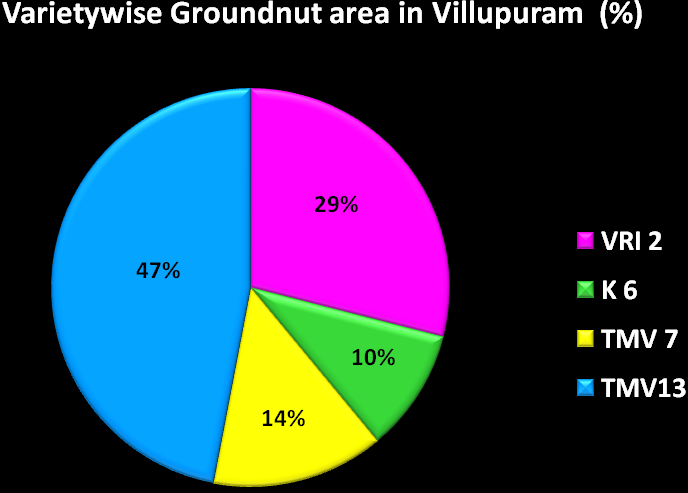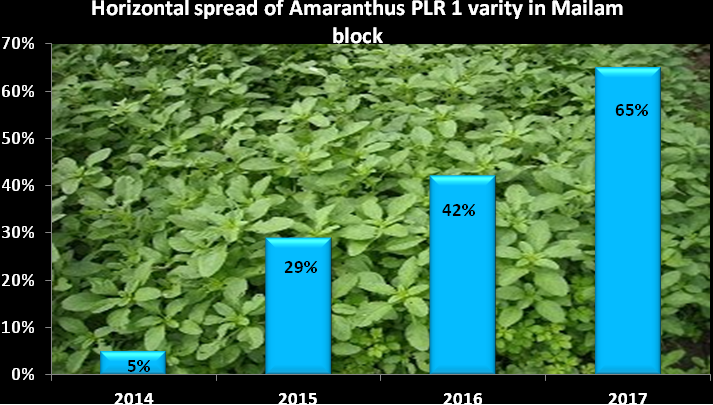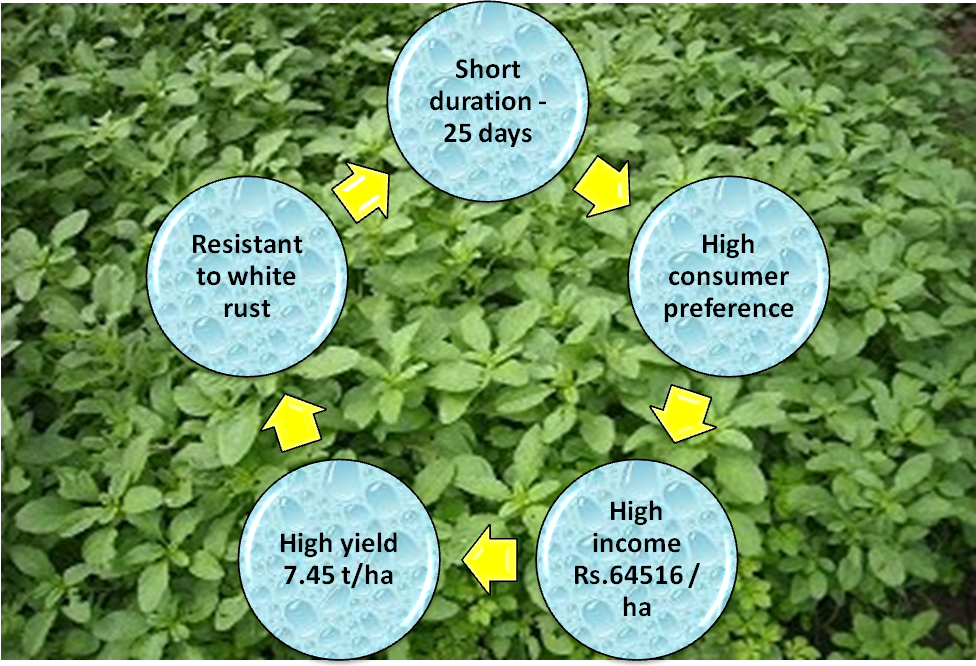Impact of training on Sustainable Sugarcane Initiative
Introduction
In India, sugarcane is the primary raw material for all the sugar mills as well as for Jaggaery producing cottage industries. About 7.5 million people are employed directly or indirectly in sugar mills. Out of 3.82 lakh hectare sugarcane area in Tamil Nadu, Villupuram covers 93,849 ha. The farmers are adopting older/traditional technologies for sugarcane cultivation and they are getting lower yield and have the training on the innovative technologies of sugarcane is the need of the hour. SSI training focused on the introduction of newer varieties, latest technologies, integrated pest and disease management, soil health management to enhance the production. The training ensures remarkable changes in the attitude, knowledge and skills of Villupuram farmers.
Technical Session
The topics handled during the training programme covered creation of awareness on Sustainable Sugarcane Initiative, Latest Sugarcane production technologies for augmenting the yield, Single chip bud method, Nursery preparation in SSI, Land preparation, Weed management, Irrigation management, Nutrient management, Intercropping, Pest and disease management, Harvesting technologies.
Exposure Visit
The farmers were taken to farmers field to view the SSI technology adopted sugarcane cultivation. The resource farmer shared his experience and interacted with the trainees. During this exposure visit the farmers were fully exposed to SSI technology from nursery to harvest.
Methodology
It is important to know the knowledge of the participants, to the measure impact of the training on SSI technology. The understanding level of the sugarcane farmers with SSI technology was measured by using a well structured schedule. The schedule was prepared with the help of experts and administered to the participants. The survey was taken in Uludurpet block among the 30 participants who attended the SSI training programme at KVK, Tindivanam. The schedule was evaluated by assigning scores and cumulative frequency to categorize the understanding level of the participants.
(n=30)
| S.No | Item | Pre evaluation score | % | Post evaluation score | % |
|---|---|---|---|---|---|
| 1 | Selection of chip buds | 21 | 70.00 | 29 | 96.67 |
| 2 | Set treatment | 20 | 66.67 | 26 | 86.67 |
| 3 | Nursery preparation | 15 | 50.00 | 26 | 86.67 |
| 4 | Drip irrigation and Fertigation method | 18 | 60.00 | 27 | 90.00 |
| 5 | Use of TNAU sugarcane booster | 10 | 33.33 | 29 | 96.67 |
| 6 | Application of water soluble fertilizer | 22 | 73.33 | 30 | 100.00 |
| 7 | Detrashing | 25 | 83.33 | 30 | 100.00 |
| 8 | Propping | 20 | 66.67 | 28 | 93.33 |
| 9 | Application of Tridemorph to control rust disease | 17 | 56.67 | 25 | 83.33 |
| 10 | Release of egg parasitoid, Trichogramma chilonis to control Internode borer | 18 | 60.00 | 26 | 86.67 |
| Average | 18.60 | 62.00 | 27.50 | 91.67 |
Impact of the training programme
It could be found from the above table that before training, only 10 (33.33 %) participants had knowledge on the use of TNAU sugarcane booster, fifty percent of the people doesn’t know about nursery preparation for sugarcane cultivation, and 17, 18 participants had knowledge on pest and disease management practices respectively. After attending the training programme 96.67 percent of the participants gained knowledge on use of TNAU sugarcane booster, 86.67 percent of the participants gained knowledge on nursery preparation and above 80 percent of the participants gained knowledge on pest and disease management practices.
Overall, it was found that before attending the training programme, majority (91.67 %) of the participants had only a medium level of knowledge on SSI and after attending the SSI training programme the participants had medium to high level of knowledge on SSI. The result reveals that the farmers can enhance the productivity of sugarcane crop with the gained knowledge through SSI technology. During the post survey it was noticed that the majority of the participants followed the learned technology in their sugarcane field.
Impact of Initiative for Nutritional Security through Intensive Millet Promotion” (INSIMP) scheme
Millet is one the important crop widely cultivating in Villupuram district mainly under rainfed condition. Pearl millet, Finger millet, Barnyard millet and Little millet are extensively cultivating millet crop in Villupuram. Millet farmers always go with tradition millet variety they do not follow any improved production technologies in millet cultivation. Further, they are selling their products as raw grain instead of processed millet. Hence, they get only a meager amount for the millet. “Initiative for Nutritional Security through Intensive Millet Promotion” (INSIMP) is a NADP Scheme implemented in Villupuram district through KVK, Tindivanam during 2015. The major objective of the scheme is to increase the millet production and to encourage the millet farmers to practice post harvest technologies and value addition in millets.
Methodology
Based on the maximum area under millet production, four blocks namely, Kandamangalam, Mugaiyur, Thirunavallur, and Mugaiyur were selected from Villupuram district to implement the scheme. A group was formed with 20 -25 millet farmers from each village. Totally four millet groups were formed to implement the scheme. All the groups were given with millet processing unit consist of flour shifter, dehuller, dehusker, pulverizer, packaging machine. Further, on and off campus training programmes were organized for the millet group to impart knowledge and skill on selection of improved millet varieties, integrated nutrient management, pest and disease management, post harvest technologies and value addition.
A study was conducted to the measure the impact of the INSIMP scheme. A well structured schedule was prepared with the help of experts and administered to the participants. The schedule covered with the adoption level of improved practices of millet production before and after INSIMP schem. The answered questionnaire was evaluated by assigning scores . Percentage analysis was used to categorize the knowledge level of the participants.
(n=20)
| S.No | Item | Before | % | After | % |
|---|---|---|---|---|---|
| 1 | Selection of HYV seeds | 5 | 25 | 18 | 90 |
| 2 | Seed rate | 12 | 60 | 18 | 90 |
| 2 | Seed treatment | 8 | 40 | 19 | 95 |
| 3 | Spacing | 3 | 15 | 15 | 75 |
| 4 | Thinning | 6 | 30 | 16 | 80 |
| 5 | Weeding | 11 | 55 | 19 | 95 |
| 6 | Plant protection | 8 | 40 | 19 | 95 |
| 7 | Dehuller | 13 | 65 | 19 | 95 |
| 8 | Millet value addition | 9 | 45 | 18 | 90 |
| 9 | FSSAI certification | 3 | 15 | 15 | 75 |
| Average | 7.8 | 39 | 17.6 | 88 |
Result
From the above table it could be found that before the INSIMP scheme less than 10 percent of the participants only knew about the selection of HYV seeds, seed treatment, spacing, thinning, plant protection, FSSAI certification and more than 90 percent of the participants gained knowledge on Millet cultivation & processing. Overall, 39 percent of the participant had knowledge on millet cultivation and the percentage level increased to 88 after the INSIMP programme.
Impact of Cluter FLD – Pulses programme in Villupuram District
Introduction
Pulses are the one of the major crop in Villupuram district. In Pulses, blackgram cultivating in an area of 99085 ha and the production is 68269 Metric tons. It is cultivating both in kharif and rabi season. The crop is cultivating in all the blocks of Villupuram district under both rain fed and irrigated condition. VBN 3, VBN 5, ADT 5 and T 9 are the major Blackgram variety cultivated by the Villpuram district farmers. The major problem in blackgram is Yellow Mosaic Virus disease incidence which is transmitted by white flies. The blackgram farmers obtaining low yield due to non adoption of Integrated Crop Management practices. Hence, to impart the knowledge and skill on Integrated Crop Management practices Cluster FLD scheme on Blackgram was implemented by KVK in Villupuram during 2015-16.
Cluster FLD – Blackgram
Cluster FLD is a unique project implemented in cluster approach method. Under this Cluster FLD the newly released blackgram variety was demonstrated along with full package of practices were adopted in the selected farmers’ fields with a view to demonstrate the potentiality of the technologies. During, 2015-16, 2017 -18 the CFLD – Blackgram was adopted in four villages of Villupuram district namely, Tiruvakkarai Village of Vanur block , Olliyampalayam Village of Tirunavalur block and Paathirapuliyur village of Mailam Block and Kattalai village of Marakkanam block.
During this demonstration, the farmers were given with yielding blackgram variety VBN 6, seed treatment with bio agent and bio fertilizer, application of TNAU pulse wonder and installation on traps and lures. The on and off campus training programmes, demonstration on application TNAU pulse wonder, pest and disease management were also conducted for the cluster FLD blackgram farmers.
Methodology
A study was conducted to know the impact of Cluster FLD programme. For this, an expost facto research design was used. The study was conducted in Kattalai village village of Marakkanam block with the sample size of 30. An interview schedule was constructed with the help of experts to measure the adoption level of improved blackgram production technologies before and after implementation of the cluster FLD programme. The data was collected with the help of interview schedule and evaluated by assigning scores and cumulative frequency to categorize the adoption level of the participants.
(n=30)
| S.No | Item | Before | % | After | % |
|---|---|---|---|---|---|
| 1 | Improved blackgram varieties | 12 | 40 | 29 | 97 |
| 2 | Seed treatment | 20 | 67 | 27 | 90 |
| 3 | Integrated nutrient management | 15 | 50 | 22 | 73 |
| 4 | Integrated pest and disease management | 10 | 33 | 20 | 67 |
| 5 | Post harvest technologies | 4 | 13 | 20 | 67 |
| 6 | Seed storage techniques | 4 | 13 | 21 | 70 |
| Average | 11 | 36 | 23 | 77 |
Impact of the Cluster FLD programme
It could be found from the above table that before implementation of the cluter FLD programme only 12 participants had followed the improved high yielding varieties in blackgram and about 50 % of the participants were adopted the integrated nutrient management. Only a few participants had knowledge and adopted post harvest technologies and seed storage techniques in blackgram before the cluster FLD programme but after implementation of the cluster FLD programme above 90 percent of the participants adopting the improved high yielding blackgram varieties like MDU 1, VBN 6 and following seed treatment technique to avoid the infestation of soil borne pathogens. About 70 percent of the respondents adopting integrated nutrient management including foliar application of DAP and TNAU pulse wonder to enhance the yield. Overall, it was found that majority (77 %) of the participants adopting improved production technologies in blackgram cultivation after implementation of the cluter FLD programme. Further, the area under high yielding blackgram variety namely VBN 6 has also increased to 12-15 % in Kattalai village.




